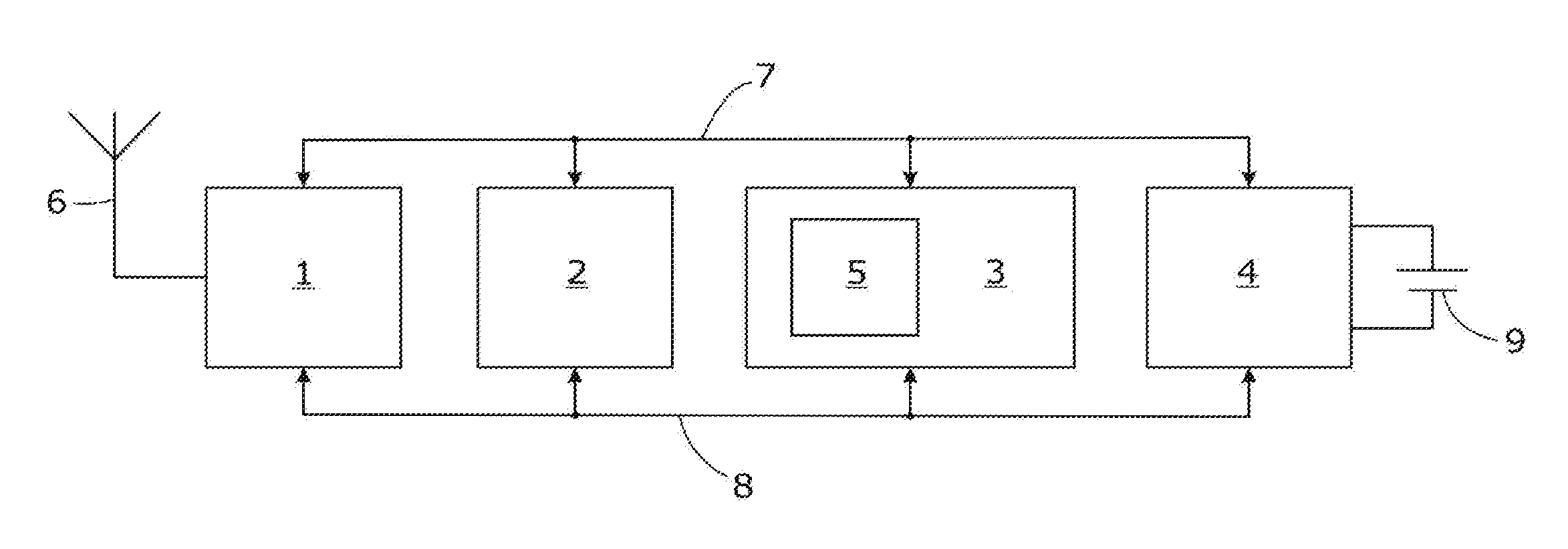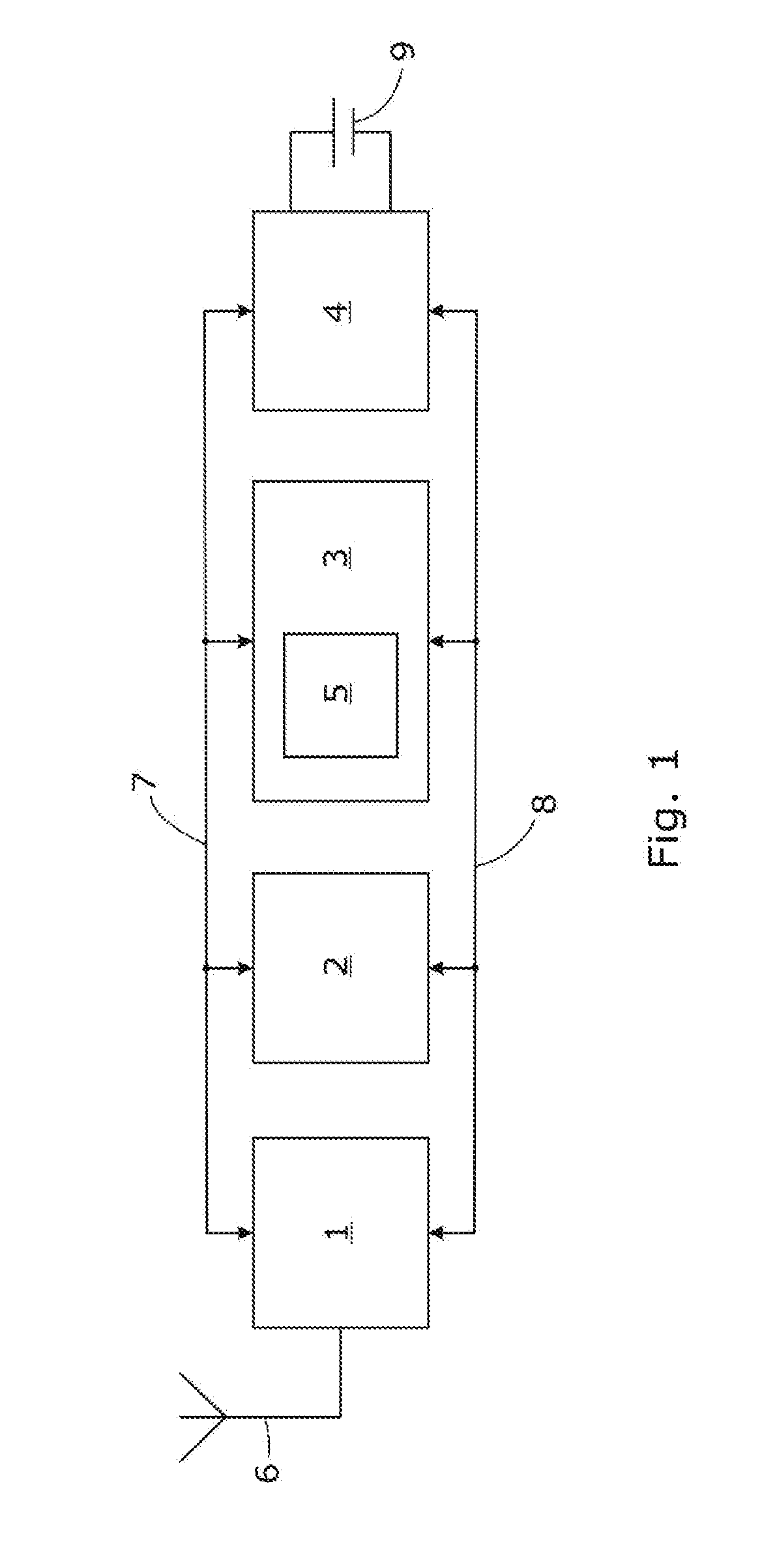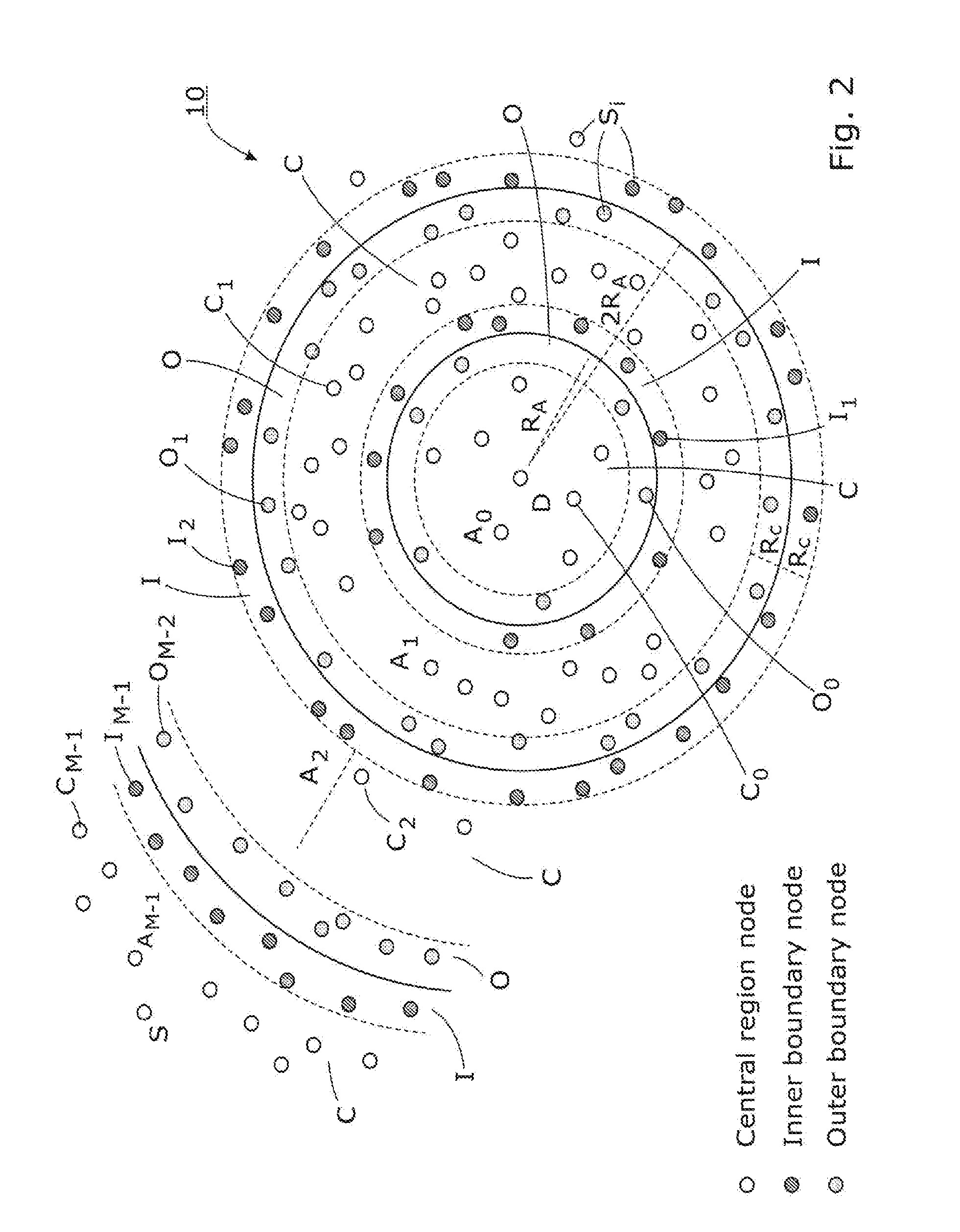Method for routing data in a wireless sensor network
a wireless sensor and wireless sensor technology, applied in the direction of connection management, machine-to-machine/machine-type communication service, high-level techniques, etc., can solve the problems of data loss, complete failure, increased protocol overhead and energy consumption degradation, etc., to improve network performance and reliability, increase the lifetime of the battery powering the network node, and increase the effect of energy efficiency
- Summary
- Abstract
- Description
- Claims
- Application Information
AI Technical Summary
Benefits of technology
Problems solved by technology
Method used
Image
Examples
Embodiment Construction
[0031]Within the description, the same reference numerals or signs have been used to denote the same parts or the like.
[0032]Reference is now made to FIG. 1, which schematically illustrates a composition of a network node in an embodiment of the present invention. Each network node is a sensor comprising a transceiver 1, a processor 2, a memory 3 and a power supply 4, all of which are interconnected by a bus architecture 7. An antenna 6 is connectable to the transceiver 1. A program code 5 is stored in the memory 3. The power supply 4 receives electrical power from a battery 9. In operation, the power supply 4 supplies electrical power from the battery 9 to the transceiver 1, processor 2 and memory 3 via power supply lines 8. The antenna 6 detects radio frequency signals from neighbouring network nodes and thereby facilitates receipt of data packets by the transceiver 1 from the neighbouring network nodes. Similarly, the antenna 6 facilitates transmission of data packets from the tr...
PUM
 Login to View More
Login to View More Abstract
Description
Claims
Application Information
 Login to View More
Login to View More - R&D
- Intellectual Property
- Life Sciences
- Materials
- Tech Scout
- Unparalleled Data Quality
- Higher Quality Content
- 60% Fewer Hallucinations
Browse by: Latest US Patents, China's latest patents, Technical Efficacy Thesaurus, Application Domain, Technology Topic, Popular Technical Reports.
© 2025 PatSnap. All rights reserved.Legal|Privacy policy|Modern Slavery Act Transparency Statement|Sitemap|About US| Contact US: help@patsnap.com



